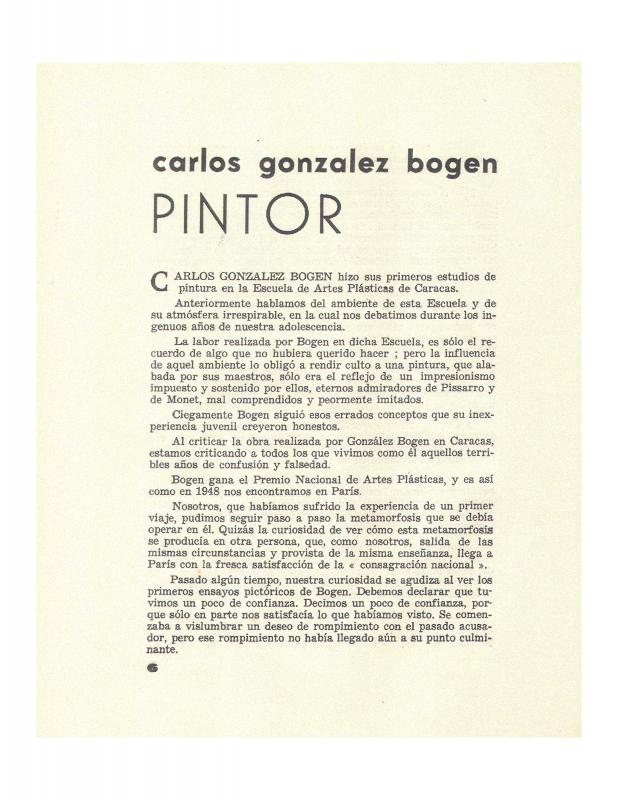Los Disidentes was a group created in Paris in 1950 by a group of Venezuelan artists and writers that lived in the city between 1945 and 1952. From the French capital they intended to fight against the official education taught at the official Escuela de Artes Plásticas de Caracas (EAPCA), derived mainly from landscape art and nativism, specifically. True to their name, Los Disidentes intended to renew traditional and academic art beliefs through the assimilation of European abstract art values. Among the artists in the group was Mateo Manaure (b.1926), who wrote this text [see doc. no. 813583]; Alejandro Otero [doc. no. 813625]; Pascual Navarro; Luis Guevara Moreno; Carlos González Bogen [doc. no. 813695]; Narciso Debourg [doc. no. 813597]; Perán Erminy [doc. no. 813463]; Rubén Núñez; Dora Hersen; and Aimée Battistini; in addition to then-philosophy student J. R. Guillent Pérez [doc. no. 813478]. They were joined, subsequently, by other national artists such as Armando Barrios, Miguel Arroyo, Oswaldo Vigas, Omar Carreño, Alirio Oramas and Régulo Pérez. They published a magazine, naming it as the group, Los Disidentes, which produced as far as five numbers, it being the primary source for disseminating their ideas.
Manaure had studied art at the Escuela de Artes Plásticas y Aplicadas de Caracas from 1941 through 1946. From there, he witnessed many of the transformations suffered throughout the years. However, more than anything else, his incisive criticism against the EAPCA was based on the fighting tactics Los Disidentes had adopted in order to attack and destroy all persons and institutions that, in their view, defended landscape painting and nativist values in the arts. This was particularly reflected in all the articles they published in their Parisian magazine, especially in the editorials. It also explains the fact why towards the end of his article, Manaure disowns the education received at the school. According to school’s history narrated by Manaure, it seems that much of the responsibility for its state of decline was due in great part to the impact of a number of Chilean faculty members. Though Manaure was benevolent to some of his Venezuelan professors, he criticized the institution for its complacency in hosting recently arrived people whom, according to the artist, only came to Venezuela “for the money.”
Many years later, in an interview, Manaure recanted his opinion: “At that time, after having acquired a solid formative education from that very old established school directed by the wise man Antonio Edmundo Monsanto, and by the group from the Círculo de Bellas Artes, who were great artists and great professors, we had to put sentimentalism aside. Through the magazine Los Disidentes, we tried to destroy everything. We were very young, but we had to destroy, to then rebuild...” (“Mateo Manaure: recuentos,” Cuadernos MUCI, Caracas, Collection No. 6, pp 25-41, [SF]).






